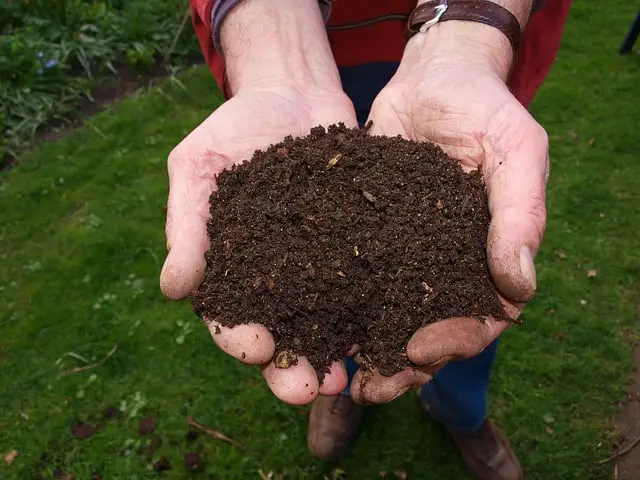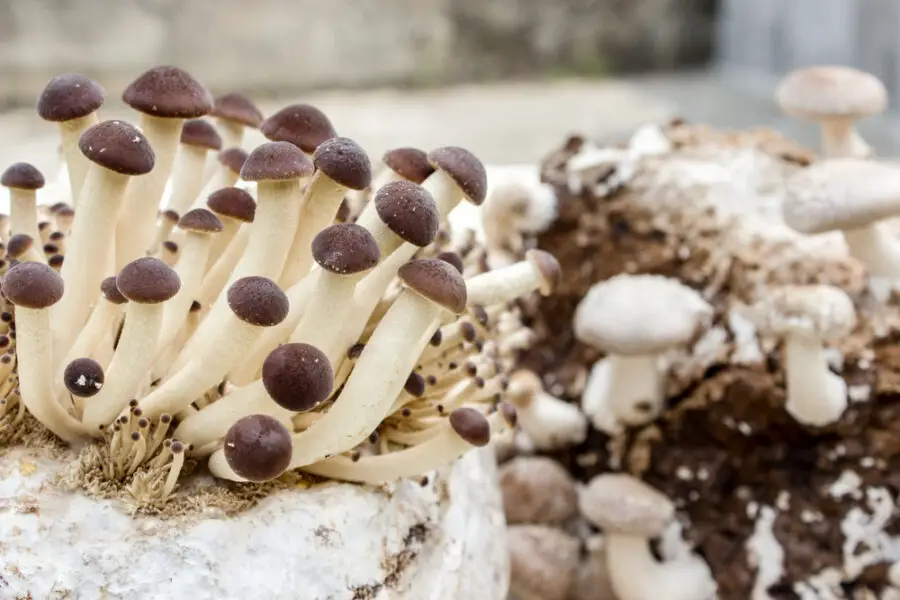Mycelium roots do not need light to mature, but light does play a role in temperature control. The mycelium does not get any benefit from sunlight directly as it lies underground, but light helps maintain humidity, in which mycelium thrives.
Mushrooms and their mycelium need around 2 hours of artificial light to grow indoors, but it does not need to be strong.
If you do not use artificial light, you can grow your mushrooms with natural sunlight in front of your window, provided there is adequate shade too. Some mushrooms do not need sunlight at all. You can easily grow these types of mushrooms in an environment without light.
What Are the Environmental Conditions Necessary for Mycelium to Grow?
For mycelium to grow, the soil must be rich and the mushroom fruit should receive some sunlight. By taking care of your mushrooms, you are indirectly caring for the mycelium.
Light
Fungi do not contain chlorophyll and therefore do not need photosynthesis. Dark environments are generally preferred for the proliferation of fungi and their mycelium network, but a little light can also benefit their growth more than harm.
Light is required for the fruit (mushrooms) to emerge and support the mycelium network underground. Mycelium requires at least one or two hours of light a day for fruiting so that the soil stays warm.
If you are growing mushrooms indoors at home or in a closed greenhouse, you can use artificial light.
Apart from that, mushrooms that grow in the wild generally take the sun’s rays filtered through branches, because they live in wooded forests.
Water and humidity
Moisture is essential for the mycelium to grow and bear fruit.
For this reason, they must be constantly in a humid environment to maintain the humidity they receive. The more humid the environment in which the mushrooms grow, the faster the mushrooms will grow. and the mycelium will spread.
This allows the harvest time to take place faster. Fungi give and receive gases in the atmosphere.
This can sometimes result in the suffocation of the mushrooms, and the mycelium, if the room is not well ventilated. The soil of the mushrooms you grow indoors should be kept constantly moist, humid, and breezy.
If you water the soil too much, it can waterlog and you can accidentally kill your fungi. Therefore, instead of watering more than necessary, pay attention to the top layer of the soil and keep the ambient humidity at the same level.
Mushrooms that you encounter in the wild drying out in humid weather do so if there is not enough rain. In addition, very hot or cold weather can sometimes cause moisture to disappear with the heat or frost.
Therefore, an ambient temperature is at least as important as humidity. Mushrooms can grow again when the humidity level rises and stabilizes.
How Does Mycelium Grow?
Some fungi can grow on old boxes, some on soil, some on trees. This varies according to the environmental conditions and the mushroom species that develop accordingly.
Since fungi feed on dead organic substances in the environment, they tend to grow in the regions where the nutrients are concentrated – which can be almost anywhere.
Commercially grown mushrooms are grown with a mixture of manure and straw. Some fungal species (Black Morels) prefer to feed on dead plants hidden under the soil.
Because these fungi hide deep around tree leaves and roots, they are very difficult to find.
How Does Temperature Affect Mycelium?
Mycelium and its mushrooms do not like very hot or cold weather. Temperate climates provide suitable ambient temperatures for the mycelium to thrive.
The average temperature required for a fungus to grow is 70 degrees F. This creates a room that is not very hot or even cool.
When the average temperature is between 50-70 F, the fruits of the mushrooms begin to appear.
Commercial mushrooms, on the other hand, prefer to bear fruit at an average temperature of 45-60 degrees F.
Does Mycelium Grow Better in the Light or Dark?
Fungi need shade to grow into mature mushrooms that bear fruit, reproduce and support the mycelium network. However they also need some light during the day, just like plants, or they may experience growth abnormalities.
One of the well-known facts about fungi is that they need darkness more than light to grow. Since 90% of mushrooms and mycelium are water, one of the most necessary environmental conditions for mushrooms is humidity.
Dark environments play a major role in maintaining moisture on the fungus.
Sunlight and excessive heat are not needed by fungi as they will remove moisture. However, this does not mean that mushrooms will grow without light.
Light is needed to determine the fruiting process of fungi. The fruiting process is at the beginning of the most important phases of mycelium expansion and continuation.
What Triggers Mycelium to Fruit Mushrooms?
Mycelium goes through many specific stages in order to bear fruit, and finally, they mature and become fruitful.
These developmental processes vary according to the types of fungi, but the result is the same.
The body of the fungi, which will later form the fruit, is the mycelium, which functions just like a cell or colony. In order for the mycelium to turn into a fungus that will bear fruit, it must go through a number of phases.
As mycelium is formed under the ground, carbon dioxide plays an important role in sprouting. As the carbon dioxide level in the soil decreases, the mycelium rises to the soil surface and begins to form the body.
This means that the fungus can produce quality fruits. Mushroom species differ from each other in terms of carbon dioxide they require.
The development of one type of fungus can be much faster or much slower than another. While humidity and heat are very important factors in the fruiting of a fungus, the need for each of these factors is not at equal levels.
Do All Types of Mycelium Grow in the Dark?
While plants absorb the sun’s energy to grow, fungi do no such thing. Fungi instead choose darker and shady environments to grow and are primarily supported by the mycelium network that gathers nutrients from the soil.
While plants need light to bear fruit, fungi can only do so in dim light. Mushrooms receive sunlight filtered from trees in forest areas.
A few hours of filtered light a day is enough for a fungus to grow, while plants need sunlight for 10-12 hours.
All fungi need a dark environment and shade so to retain moisture in the soil. However, light plays a vital role in preventing the soil from getting too cold. If you can keep the soil warm in other ways then sunlight is not necessarily needed for the mycelium to thrive.


